Graham Reid | | 5 min read
Sonic Youth: Renegade Princess (from NYC Ghosts and Flowers)
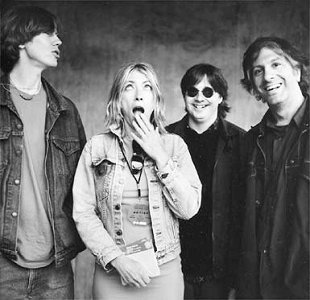
When posting Sonic Youth’s Daydream Nation (1988) as an Essential Elsewhere album last year, I noted that it was as emblematic of its time as the Beatles’ Sgt Pepper’s. But, as with The Velvet Underground’s influential debut album, it also stood diametrically opposed to the prevailing mood of its period.
If this was the alternative nation on the rise -- as this insightful book attests -- then the raw numbers don’t support the argument.
Daydream Nation sold a paltry 75,000 copies in its first year, not quite Sgt Pepper’s figures of 2.5 million in three months of release in mid ‘67.
The significance in the long view however was that Daydream Nation got this alt.rock band from New York signed to Geffen, found them being offered important opening slots (they accepted a Neil Young tour which was a debacle) and being given major label push for their first album for Geffen, Goo, which sold around 150,000.
As author David Browne -- who wrote Dream Brother about the Buckleys, Tim and Jeff -- notes here, even though sales for Goo were twice that of Daydream Nation (although Goo sprung the hit Kool Thing which came with a US$50,000 video) this still wasn’t an impressive sales figure on a major label.
Not when stacked up against the likes of returns for Guns’N’Roses.
If this was the rise of the alternative nation at the dawn of the Nineties it was hard to see. And Sonic Youth sales thereafter were equally unimpressive.
After Dirty in 1992 (sales of 300,000) they began to revert to indie level results: Experimental Jet Set, Trash and No Star in ‘94 (“a weird record” according to SY’s Kim Gordon) sold 250,000 and Washing Machine of the following year 160,000 but their albums since (A Thousand Leaves, NYC Ghosts and Flowers, Murray Street, Sonic Nurse, Rather Ripped) all pegged in between 60 - 70,000.
This seems to be the Plimsoll Line for Sonic Youth.
The significance of Sonic Youth however -- as with The Velvet Underground -- lies not in record sales, but influence.
Their cachet of cool brought Nirvana and Beck to major labels, and to a greater or lesser extent opened the door for college radio bands like Pearl Jam, Soundgarden, Mudhoney, Jesus Lizard and Pavement.
And on a business level they wrote themselves a contract that allowed for side projects, complete control over album art and content, and ownership of their music.
They were so powerful that even when their sales for Geffen were close to abysmal, no record company head honcho would wanted to be have been known as the one who let Sonic Youth go.
Although Thurston Moore would bemoan “the lack of coin” in later years, at least Sonic Youth had a viable career. As Steve Shelley noted, once they realised they would always be bridesmaids and never brides they sort of adjusted.
If the notion of “a career” seems anathema to the concept of an “alternative nation” in rock, then that misreads who SY were: they were intelligent (both Moore and Gordon came from academic households), were conspicuously middle-class (Moore and Gordon had a traditional church wedding), and were serious minded.
Out
of that conservatism (hard work, ambitious, orderly) their artistic invention
was allowed to flourish (mostly) free of the distractions of sex and drugs and
rock’n’roll culture. They moved in artistic rather than rock circles.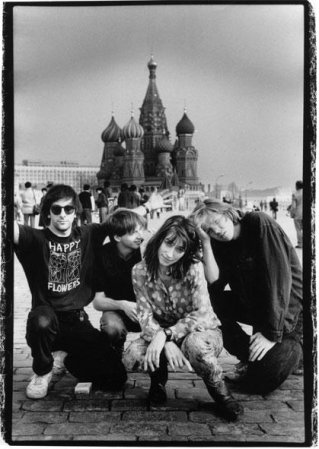
They knew about money and when they signed to Geffen they admired the business model of the Grateful Dead. They also shed quite quickly -- and somewhat ruthlessly -- some of those who had supported them in their struggling indie days and the casualties were collateral damage as they advanced their career up the corporate totem pole.
This might make uncomfortable reading for those who believe indie rock bands march to a different drummer, but SY’s shortcomings in that regard are peeled away here. For aspiring musicians these 400 pages may also be read as a primer on how to/how not to deal with both indie and major labels.
This book covers their career with fine focus through interviews with all the band members, major and minor players in their world.
What becomes apparent is how “connected” SY were, right from the start: few rock bands could have an index of names such as diverse as soundtrack composer Danny Elfman (a former partner of Gordon’s) and avant-garde figures such as Glenn Branca and Phillip Glass alongside poet William Burroughs, Beck, Nirvana, Courtney Love, video director Spike Jonez, Sofia Coppola and Patti Smith. These were friends, collaborators and kindred spirits.
As the introduction notes, “Over nearly three decades, [Sonic Youth] tapped into a separate and parallel arts universe of illustrators, graphic designers, directors, painters, poets, actors and actresses, zines and underground comic artists -- even extreme sport video makers. All that world flows through the saga of Sonic Youth.
“As with the Beatles, Bob Dylan, and only a few others, Sonic Youth’s is the place -- but for a different generation -- where music, art and culture interconnect; nothing afterwards was quite the same.”
Certainly
not for Nirvana, Beck and REM who followed them, then surpassed them in terms
of sales and profile. As Jim O’Rourke (briefly in the band at the end of the
Nineties) noted though, opening for REM or Pearl Jam who owed their careers to
some extent to Sonic Youth’s successes, was sending the wrong message, like
saying, “you’re only good enough to be an opening band”. He quit. 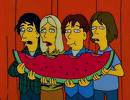
Lee Ranaldo noted, “We’re the Rolling Stones or Grateful Dead of our generation, or something”. They were so cool and well-known they appeared in The Simpsons.
Sonic Youth didn’t invent the alternative nation, but they certainly showed how it was possible to survive, prosper artistically and be fulfilled in it. They make a good argument for being smart.
These days Moore (age 50) and Gordon (55) live in a large suburban house with their kids, and as with Ranaldo (53) and Shelley (46), they pursue solo creative work outside of the Sonic Youth brand.
Sonic Youth might not have sold albums in the quantities that many might have expected when they signed to Geffen, but their impact was enormous.
“Even if bands realise it or not, Sonic Youth helped create the environment we now live in,” says Gerard Cosloy, the former Homestead Records employee who went on to co-found Matador records.
“If people say they’ve been influenced by Sonic Youth, that’s nice, but if Sonic Youth influenced them to do anything, it’s to -- and I know this sounds corny -- to be themselves. And to not be like Sonic Youth.
“I’m not sure they ‘advanced rock’ or advanced free music in any given way, shape or form. But they’ve created an environment where people who make music that is even crazier than theirs, and occasionally better than theirs, have a chance to play in front of more than 10 people.
“That’s a great thing. If there’s nothing else to be proud of, they can be proud of that.”



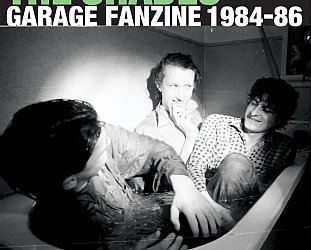

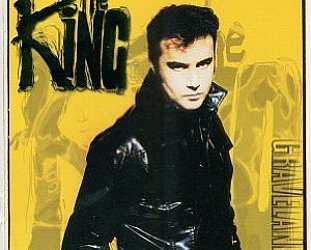
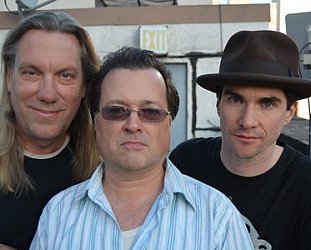
post a comment